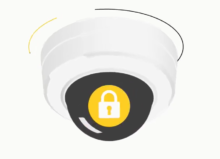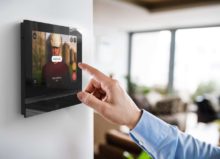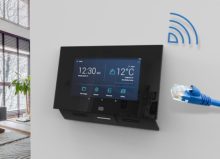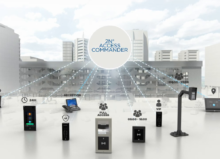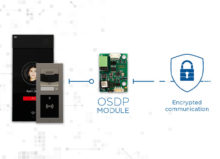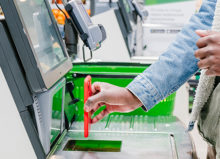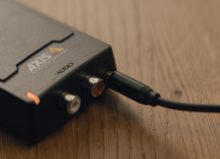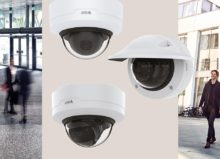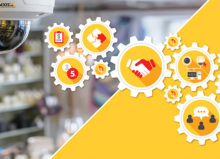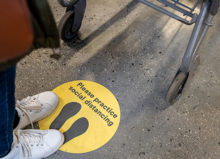Frictionless Access Control, what it is and what it could be

By John Allen
Frictionless
There is a growing debate around the application of non-contact physical security – ‘frictionless’ as it is being described. The reasoning includes the quicker processing of people, securely, into and out of managed buildings and places, as well as the emerging requirement for distancing and avoiding contact with surfaces – keypads being a good example, but including RFID and fingerprint biometric readers at locations such as mass transit entry/exit points.
At its apex, a frictionless experience would likely be a completely contactless movement of people into and through a secured layer effectively and efficiently. There are already rapid process/movement solutions, usually applied through entrance control systems; however, there is a growing call for even less friction in the process, using face recognition technologies in access control applications and replacing the RFID reader.
Partner solutions
Such systems are in use already; CCTech has released its very successful face recognition access control solution ‘CleverAccess’ which takes traditional access control and improves it to offer alternative credentials and, being a mobile phone app with self-enrolment, does not present the privacy issues associated with face recognition adoption in public areas. Another Entryfy, uses secure QR codes in a cloud service. This has been very successful in enabling frictionless access control in unmanned storage applications and is now reaching a wider audience for physical security applications.
Frictionless also plays a part with other innovative solutions including Doordeck and their own version of access control in co-working and co-living spaces, with applications using QR codes to manage doors and users across site and country-wide door and I/O sensors using a frictionless design and simple deployment method.
Consider the retail industry. As it struggles to recover from the parlous state imposed on it by the Coronavirus pandemic, the already innovative Autonomous Shopping experience is surely a very likely contender which can help retailers recover and even become more effective in their operations.
The adoption of smart devices in physical security is opening opportunities for new and innovative access control solutions, including alternatives to the traditional access control identity card, which have the potential to add value and widen the options for users.
Alternative credential
QR codes. ID cards, combined with QR reading via cameras in IP Intercoms or in dedicated IP security cameras, have proven to be able to extend security at low implementation costs and ease our way into the GDPR compliant world of visitor management
Face recognition, already used extensively, these systems use standard IP cameras in conjunction with managed scene environments to offer accurate and reliable access control. Face recognition in access control is an accepted alternative to RFID, and as processing power grows, edge-based solutions also get closer and the camera processing power could result in capture / image process capability in the camera itself, leading to lower costs, faster decision making & a lighter architecture without servers. Access control using face recognition is not the same as face recognition in public spaces and, importantly, the processing of personal data must comply with all GDPR requirements to protect integrity and security.
With this edge revolution, smaller applications, such as in kindergartens and schools become an option. And with lower purchase and no id card costs it becomes an option to traditional access control. We anticipate this to be particularly attractive in a hosted services environment.
Voice activation. The elevation of a novel way to communicate and access music is morphing into a home tool to provide voice activated intrusion detection; we anticipate a market for voice encrypted credentials, albeit starting in niche applications.
Frictionless in an uncertain future
Now, of course, the description of what frictionless means takes on another meaning and an urgency to create future-proof solutions for an environment where considerations around human interaction are likely to be increasingly important. New practises will emerge to reflect the need for less contact with others in both the social and working environments, while still enabling flow through entrance and exit points.
Prominent on the list will be enhanced methods of public area people ‘management’ in areas such as shopping centres, where the application of intelligent data gathering will deliver improved solutions which are interactive in a more granular, responsive manner, made possible by an increase in the number and type of sensors used (cameras, analytics, condition lighting, intelligent PA systems), all working together and all based on cyber hygienic, secure networked installations.
Working practises are also likely to change, with an expectation from office experts of out of office or home working as a priority option and a review of traditional office space use. From the physical security and access control perspective it is certain to lead to a deeper discussion around security as significant numbers will still gather at work or leisure places, with the same risks from terrorism, but can we reduce the physical contact to make that ingress/egress work in a frictionless way?
Certainly, initial actions taken have seen many card and PIN operations adjusted to card only, yet even then, there is the element of unwanted threat through contact. So frictionless can also mean contactless and may come to define a new expectation of buyers and users of access control.
The whole treatment of the world as we did see it, is being shaped and coloured by our experiences of recent times, and as a result, we are much more cautious of how close we should be to others; so how will that affect mass transit points such as a rail / underground station ticket barrier and how might it impact on some of our traditional credential methods, card readers and especially keypads, but also contact biometrics? For that matter, will it impact the way we design buildings, where we might consider doors which allow opening either way, so they can be pushed by a shoulder or elbow?
Summary
So, can we offer a frictionless life? No, but with thought, imagination and a new interpretation of existing proven principles, there is the opportunity to create and deliver a frictionless security experience, or at least the beginnings of what a frictionless physical security experience should or might be.





